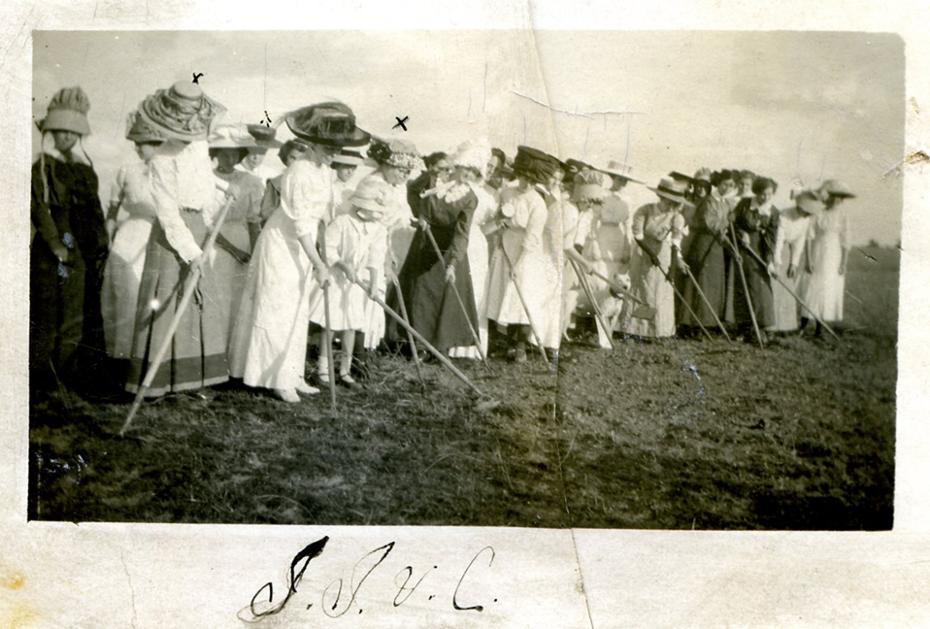USAO's storied history soon to be enshrined in professional publication

Now well into its 113th year of existence, the institution now known as the University of Science and Arts of Oklahoma has undergone many transformations—both physically and culturally—in its time. From its brief original incarnation as the Oklahoma Industrial Institute and College for Girls, to its storied period as one of only two baccalaureate-granting institutions for women west of the Mississippi River, the Oklahoma College for Women, from its initial co-educational time as the Oklahoma College of Liberal Arts to, finally, USAO, the school has always stood apart from its peers in the Oklahoma higher education system, not only for its distinctive mission, but for its unmatched quality, affordability and academic culture.
In order to preserve this history before it is too late, and in order to share the story of this special place with the wider world, the university administration had long been working on a comprehensive history book of the institution. USAO Professor of History Dr. Dan Hobbs worked for many years compiling the necessary information and writing a detailed narrative before he retired. More recently, President Feaver contacted Associate Professor of History Dr. James Finck to edit the original narrative, add a few chapters on the most recent years, collect the needed photos and begin to prepare the book for publication.
“What has really come out as I have worked on this project is that this university has gone through a lot of hard times in its history in many different ways,” said Finck. “But the people who study and work here have come together as a family every single time and found a way to come through it. Of course, there have been external struggles and in-fighting on campus, but in the end the mission of this special place has always meant so much to people that we have triumphed. It is absolutely no surprise that when you ask anyone connected with USAO what they think about the institution, community is almost always one of the first words they use.”
Given how many changes the institution has undergone, Finck believes that this book will be crucial for both new students and alumni to connect with the long and fascinating evolution of the school throughout the years, from the legislative arguments about the need for a women’s college, to its transformation to a co-ed liberal arts university, and how things stand today.
“Looking at the past helps us understand where we are today,” said Finck. “When I started work on the book, I really did not know the history of the school other than it was a women’s college. Watching the school grow to where it is now has been fascinating, and there are lots of amazing stories I have discovered doing this research.”
While Finck notes that Hobbs had already done an extraordinary amount of research on much of the school’s history, in writing the last chapters on the most recent years he still had to pour over piles of written information including Regents’ meeting minutes, back issues of USAO’s student newspaper The Trend, faculty and staff association minutes, news releases, internal university communications, professors’ notes and just about any document that could be of use. With the text of the book largely complete, Finck is now focused on getting the book’s final layout worked out and finding photos from various periods in the school’s history.
“I hope to have it done this semester, but the pandemic put us a year behind schedule in terms of finding pictures,” said Finck. “We have been having some trouble getting the kind of images we want; the quality is really all over the place. But my students have been a wonderful help in all of this. I have lots of them digging through the university archives and getting involved in the layout process. Working towards publishing an actual book is an experience most college students don’t get.”
But with USAO’s small class size, intimate campus environment and interdisciplinary learning model, students are actively empowered to seek out ways to broaden their horizons outside of the classroom and gain real-world experience putting their education to use. The entire concept of a liberal arts education is to provide the individual with an extensive base of knowledge in the essential arts and sciences needed to make intelligent and beneficial decisions for oneself and for society, and USAO constantly seeks innovative ways to allow its students to develop these capacities.
Far from being an institution only meant to serve those in nearby regions, USAO offers students from everywhere in Oklahoma, the United States and the entire world an opportunity to have a college experience completely different from both the enormous public research universities and, with some of the lowest tuition rates in the nation, the exceedingly expensive private ones.
“The idea of a small liberal arts school is such a great option for many students,” said Finck. “Big schools have big, loud, fun things like football and fraternities, and some people want that, but so many students get lost there. I know almost every kid who walks across this campus personally, which is really special. Every faculty member here is exclusively focused on teaching, not on their grad students or their current research project. We simply provide a better undergraduate education than elsewhere."
